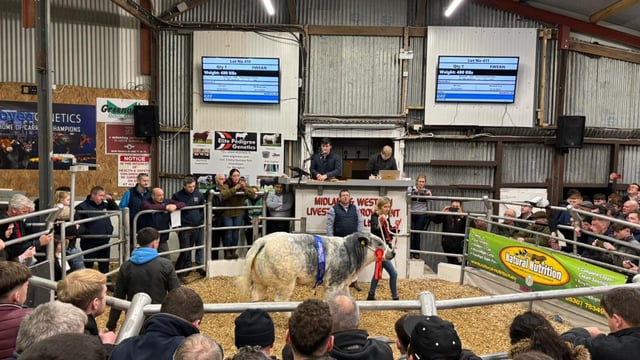Is your autumn calving herd cycling ahead of breeding?
Ensuring the winter milking herd is now cycling is an important step ahead of the fast-approaching winter breeding season.
The majority of farms are now wrapping up autumn calving and will be preparing for the breeding season ahead.
Farmers aiming for an October 1, 2026 target calving date will have to begin breeding from December 20.
However, some of the cows which have calved down may not be cycling due to underlying issues such as infections or cysts that could have been picked up during or after calving.
Some cows may also have their reproductive performance affected by endometritis, as it is an infection of the uterus that persists beyond the third week after calving.
Any cows that are having issues may need treatment and time to recover fully, so identifying them now is crucial to maintaining a a strong calving interval.
To identify these cows, pre-breeding checks need to be carried out before the breeding season starts, helping you save time and money when it comes to breeding.
Cows cycling
The first step of any pre-breeding checks is to look at on-farm records from the previous breeding season and the calving season.
These records may help farmers identify cows that need to be checked by the vet prior to calving, especially any that had a difficult calving or suffered with some metabolic issues.
This should then be followed by pre-breeding heat detection to identify any cows having silent issues.
Ideally this should start at least three weeks prior to the mating start date, meaning many farmers should begin towards the end of this week.
A lot of farmers have now adopted technology to assist in heat detection; however, those who do not use technology should begin tail painting cows a certain colour now.
If the cow shows signs of cycling and her tail paint has been rubbed off, she should be tail painted a different colour to notify that she is cycling.
For any cows that are not showing signs of cycling, farmers should have their vet come out and carry out a metric check, which is an examination of vaginal discharge to see if the cow has endometritis.
Early identification means the cow can be treated with metricure or whatever treatment the vet recommends.
Without pre-breeding checks, if you have cows that are not cycling before breeding season begins, it will be at least three weeks into breeding before you can identify them as 'not cycling'.
If a number of cows have not come into heat during the breeding season, a synchronisation programme may be discussed with your vet to ensure the cows get the best possible chance of going back in calf.





